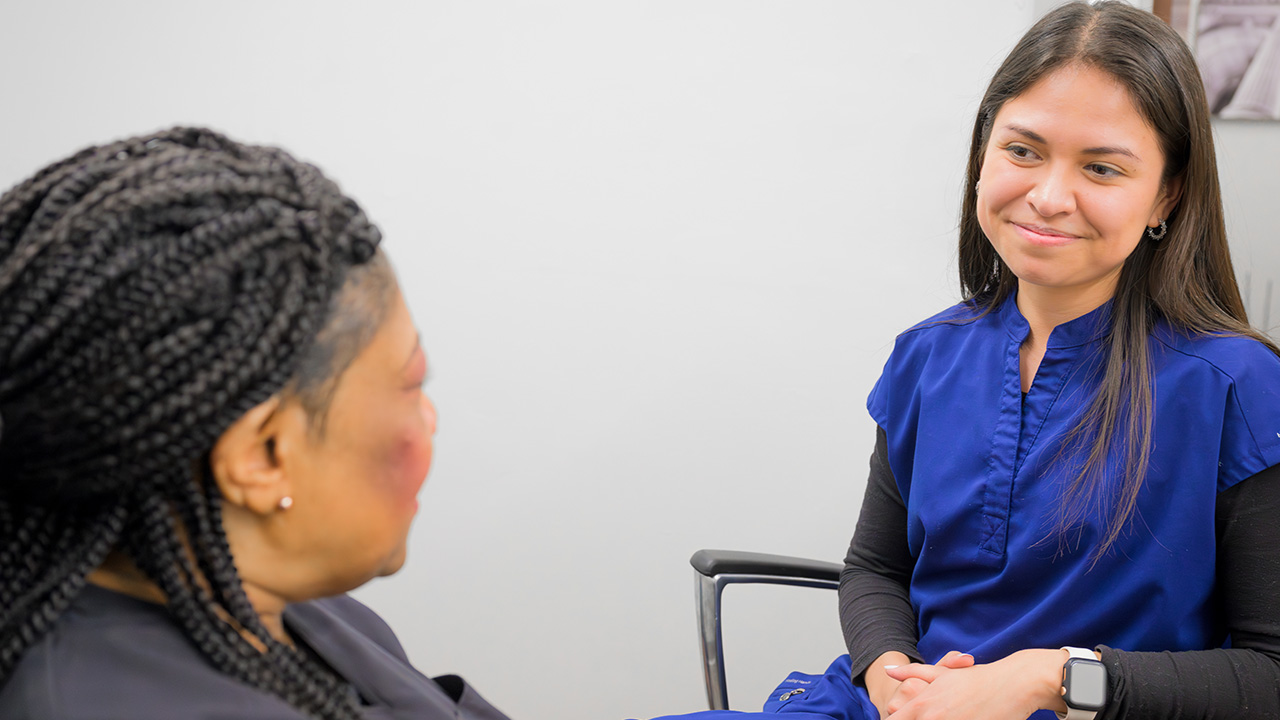content body

Daniels, who is working toward a doctorate in mathematics with a concentration in statistics, is an experienced public health professional and an Auburn University Rural Health Fellow.
Growing up in tiny Helicon, Alabama, Auburn graduate student Miranda Daniels knew a trip to the doctor meant a long car ride. Over the years she has only seen a decline in the availability of health care providers, especially maternal care, close to her hometown.
“A lot of doctors stay and practice until, bless their hearts, they’re 70 years old,” she said. “When they retire, you’re not really seeing new doctors fill those voids. So, you’re going to have at least a 45-minute drive to Baptist South in Montgomery.”
Daniels, who is working toward a doctorate in mathematics with a concentration in statistics, is an experienced public health professional. As one of the university’s first Rural Health Fellows, she is currently completing a project at the Chambers County Community Health & Wellness Center aimed at improving health outcomes in LaFayette, Alabama.
The Rural Health Fellows program, which is an offshoot of Auburn’s Rural Health Initiative, aims to train future health care leaders to create positive change in health equity. After a rigorous application process this past fall, the seven students who were named Fellows are now gaining experience in rural health care by attending monthly meetings, completing Canvas course modules online and designing and implementing health-centered activities in the LaFayette community. Fellows receive feedback on their projects through regular review sessions with the health service team along with constructive critiques and mentorship from experienced professionals in their respective fields.
Daniels is combining her interest in public health with her love of numbers to produce a clear picture of the community’s health. That will enable local organizations, including the Rural Health Initiative, to target resources and provide better services for residents.
She is currently analyzing data from both the community center and the Alabama Cooperative Extension System’s Thriving Families program that includes population, income and health data. She will study demographics and incidents of disease to determine which illnesses are occurring most often.
Daniels discovered her interest in public health as an undergraduate student at Troy University and hasn’t looked back.
“As a student, I did a lot of research, and that’s how I ended up down the rabbit hole of epidemiology and biostatistics,” she said. “But my interest in public health is mostly just from growing up in an area where we have a lot of health disparities.”
Before enrolling in Auburn’s College of Sciences and Mathematics last fall, Daniels worked for the Centers for Disease Control and the Alabama Department of Public Health (ADPH). She remembers Friday the 13th in March 2020 as the last day of normalcy before COVID-19 upended the world and the field of public health. Because she interned at ADPH’s Center for Emergency Preparedness and had worked with infectious diseases, she was immediately assigned to assist the Infectious Disease and Outbreak division.
“It was an all-hands-on-deck situation, and because of my experience, they pulled me back in to help assist in the data analysis for the COVID response team,” she said. “Ironically, everyone else was at home sheltered in place, but we had to go into the office.”
Daniels is bringing her experience at the CDC and ADPH to her work at Chambers County this spring, and she has several hypotheses about what she may find. She knows roughly 13% of county residents are uninsured, and 14% qualify as having a disability. One-fifth of the population lives below the poverty line.
“We already know that racial and ethnic minority groups in the United States have higher rates of illness across many health conditions, including diabetes, hypertension, obesity, asthma and heart disease, and the likelihood of these events is more frequent among those with low socioeconomic status,” she said. “According to the U.S. Census, Chambers County has a median household income of $48,805, which is approximately $27,500 less than the national median household income. Through this research, my hope is to gain a better understanding of health disparities and develop targeted intervention to assist in advancing health equity.”
Eventually, Daniels hopes to work her way to a management position in public health, where her skills in number crunching can help policy advocates and community organizations make real change in health outcomes. Her work with the Rural Health Fellows this semester is preparing her to do just that.
“I have work experience and know how to navigate the data,” she said. “My goal is to be able to assist the people here in Chambers County and tell them what resources they need and where to find them.”





